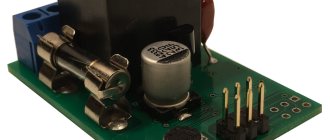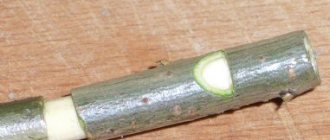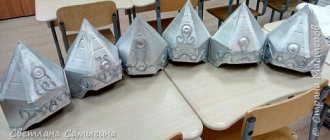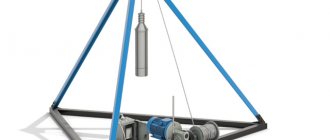Author's rating
Articles written
698
Author of the article
Vasily Mikhailovich Sviridov
home appliance repair technicians Salary from 80,000 rubles!
Published: 17-10-2018
Modified: 17-10-2018
Reading time: 4 minutes
This article has: (i)
An automatic washing machine (AWM) without an electric motor is nothing more than a tank or stand for things. The mechanical rotation of the moving elements responsible for washing occurs thanks to the “heart” of the device - its motor. The quality of washing and the energy efficiency of the model depend on the characteristics of the electric motor. Let's figure out what washing machine engine power is considered optimal and why the user should be interested in this question.
What types of engines are there?
Developers select a motor for a washing machine taking into account the characteristics being implemented. There are three types of electric motors used in automatic washing machines:
- Asynchronous. There are 2- and 3-phase. In modifications of the SMA released after 2000, only 3-phase versions are used. Their power is 180–360 W. They can provide almost 300 revolutions per minute in the wash. In machines with asynchronous motors, the rotation of the drum during spinning is quite small - up to 600 rpm, very rarely this figure approaches 1000.
- Collector. This electric motor is more advanced than an asynchronous one. It operates on any type of current - alternating or direct. It has smaller dimensions, which means the device will be less bulky and heavy. In such engines, the command block smoothly regulates the number of revolutions per minute. But there is also a minus - commutator motors have brushes. These elements not only create noise, but also wear out intensely - as they wear out, they have to be replaced. They are rated at 380–800 W.
- Brushless. Scientists at the Korean concern LG have been thinking for a long time about how to increase the power of an electric motor without increasing the energy consumption of the SMA. The brushless motor is capable of rotating the drum at high speeds without wasting energy on belt and brush friction. SMAs with such engines are characterized by high efficiency. This is the last type of engine in the chronology of inventions. They first began to be installed on SMA in 2005 at LG factories. Its main difference is direct drive and compact dimensions. A washing machine with a brushless motor does not have a belt drive. Such washing machines are characterized by silent operation - there are no brushes or belts, and high efficiency. Power characteristics are similar to the options described above. It is capable of rotating the drum at speeds up to 2000 rpm.
How to find out how many revolutions an electric motor has? Look at the information plate that is available on any electric motor.
Important! The engine power consumption depends on the operating mode - washing or spinning. The value of this parameter is not indicated in the technical documentation for the SMA; it must be looked at directly on the motor itself.
What is the optimal engine power for washing machines?
What power machine should I choose in order to save money and not lose quality in washing? If you choose an economical class “A” washing machine with advantages, then give preference to well-known manufacturers. Market leaders do not disappoint in the quality of washing. But such equipment is more expensive than its analogues. Machines with low power from unpopular manufacturers do not wash and spin clothes as well and take longer to heat the water. Such low-power washing machines are usually turned on at maximum settings, which leads to breakdowns. Advantageous options are presented among models of classes “B” and “C”. The average engine power of the washing machine provides intensive washing, while spending energy moderately. Energy consumption differs insignificantly from class “A”. The same components are used. The differences you pay for are brand, options, design. It is difficult to find washing machines of class “D” and lower to “G”, since their number is scanty on the market.
In addition to the energy saving parameter, pay attention to the washing class. It often turns out that “A” class washing machines wash things in the same way as “B” or “C” segment equipment. Some manufacturers make the mistake of claiming the highest washing class. But in practice this turns out to be a marketing ploy. If your goal is to save money, then choose the middle washing classes “B” or “C”.
If you choose a spin class, then in this matter you should not chase a high rating. Models with a level A spin run at high speeds, which can damage things. The number of revolutions reaches 1500-1600 per minute. Not all materials can be washed so vigorously; a delicate cycle is often required. Synthetic clothing does not “like” intense spinning. The best option is a machine with a spin speed of up to 900 rpm. This corresponds to classes “E” (up to 900 rpm) or “D” (up to 600 rpm). Regardless of the power of the washing machine motor, careless handling of the equipment leads to waste of electricity:
- After completing work, unplug the device from the outlet. Even in standby mode, the machine consumes electricity.
- Wash items in the appropriate mode. The machine consumes up to 30% of excess electricity if the mode is selected incorrectly.
- Don't wash little by little. An incomplete drum wastes 15% more energy. Load the washing machine to the permissible maximum, but without fanaticism.
- Don't overpay for unnecessary options. Using the drying function is a waste of energy.
A machine with this option costs more than its counterparts without drying. But the spin function also does the job perfectly. Using a dryer after washing also wastes extra energy. Well-wrung laundry will dry quickly without additional manipulation. In everyday life, a washing machine is used relatively infrequently, unlike a stove or refrigerator. The savings effect is not so significant. It is much more important that the machine washes efficiently. An important point is the cost of repairs. Expensive economical washing machines are so expensive when they break down that it is more profitable to buy a new washing machine. One of the expensive bells and whistles is an electronic display. Significantly increases the cost of an automatic machine, it often breaks down, and its repair is expensive. Having an aquastop will help you avoid the cost of repairs in your home and your neighbors downstairs. If it breaks, you won’t cause a flood in your apartment. This is one of those extra features that you shouldn't skimp on.
What are the power characteristics of an electric motor?
The rotation speed of the drum of an automatic washing machine—the number of revolutions it makes per minute—depends on the type and power of the engine. The higher the speed, the better the spin. However, you need to remember that not all fabrics can withstand such speeds without consequences. For a more gentle push-up, set the speed lower - in modern machines you can adjust the spin speed. And the technical documentation indicates its maximum value.
The electric motor determines how much electricity the entire washing machine consumes. The number of kWh that the device will “wind up” depends on its power indicators. When buying household appliances, the consumer is not interested in the power characteristics of the electric motor, but in how much he will have to pay for the light. Energy consumption is a value that depends on several factors. The number of kilowatts consumed per hour is affected by power:
- electric motor;
- heater - 1.7–2.9 kW, the hotter the water, the greater the value;
- pumps - 0.024–0.040 kW, this is enough to pump out dirty water;
- sensors, control unit and display - 0.005–0.010 kW.
The total power is calculated only for one mode - “Cotton”. At 60°C and full load. Based on the test results, the models are assigned energy efficiency classes - there are 7 in total, and are designated in Latin letters. The highest class is A, the lowest is G.
Electric motor for wood splitter
The basis of the design, as in a lathe, is the bed. It is made of a metal profile or square. The resulting site will consist of two zones - power and working. The power side is intended for installation of an electric motor. It must be securely fastened, since the main load falls on it.
The engine control unit is located in the same area. A dielectric plate is provided to accommodate the electrical components, and they themselves should, if possible, be placed in a plastic housing. The work area is made in the form of a table. The material used is steel sheet, 2-3 mm thick. At the boundary that conventionally separates both zones, a pedestal is mounted on which the shaft of the splitting cone is fixed. This part must not be mounted directly on the motor shaft.
The cone shaft is equipped with its own bearing support. In order to compensate for jerks and create torque, it is recommended to install a flywheel on the shaft.
After assembling the entire structure, you can begin connecting the electric motor. Asynchronous motors are most often used. In older units of this type, a separate winding is provided for starting. To determine it on the engine, you need to use a tester to measure the resistance on each winding one by one. The desired winding will have a higher resistance. It is directly involved in creating primary torque in the desired direction. If it is necessary to change the direction of rotation of the shaft, the connection points of the starting winding are swapped.
Modern electric motors start much easier. To turn it on and off, you can use a regular household machine.
How much does SMA consume?
When choosing a washing machine, buyers evaluate it according to a standard set of criteria. Usually they are interested in modes, drum loading, dimensions, loading type, drum illumination and other visible functions. But people are rarely interested in kilowatts. The lower the energy consumption class, the more electricity is spent, the higher the electricity bills. Today, almost all SMAs belong to group A. The exception is devices with a drying function - but here you have to sacrifice savings for the opportunity to receive dry laundry.
Energy consumption can be easily determined by the energy efficiency class. Thus, models A+++ consume 0.13 kWh, and, for example, group C - 0.25 kWh. Power consumption of class A SMA is up to 0.31 kWh. Equipment of groups E, F and G is not used in everyday life. Its consumption is respectively 0.39 and 0.4 kWh.
How to save energy
Despite the characteristics of the washing machine and its power consumption in kW stated in the passport, you can reduce costs:
- Unplug the machine after finishing washing. When plugged into an outlet, it continues to use energy.
- Choose the right program depending on the main factors: amount of laundry, type of fabric and degree of soiling. This reasonable approach will save up to 30% of electricity consumption.
- Do not divide one load into several small washes. If the weight of the laundry allows, then it is better to load the laundry to the maximum value. According to the characteristics of washing devices, an incompletely loaded drum consumes 10-15% more energy.
- If you have the opportunity to dry your clothes outside, then there is no point in setting the spin/dry mode to full speed. This way you can save money and get fresh, sun-dried laundry.
- Clean the heating element from scale every six months. To do this, put an anti-scale agent in the powder compartment and turn on the “Cotton Wash” mode, selecting heating to a temperature of 60 ° C.
- For a small amount of clothing, you can use the “quick wash” program: its cycle is several times shorter than usual, consumes less water, and accordingly saves energy. This program is also called the partial occupancy or “few things” mode.
For a family of three, it is wiser to choose a small model to optimize energy costs. For large, high-volume washes, choose a Class A or B machine.
When choosing a washing machine, focus not only on appearance, variety of functions and enormous power. You can purchase a home assistant who will wash things efficiently and save money.
Electrical speed control
To assemble an electric bicycle from a washing machine motor, you need to install a control unit. What you will need:
- AC resistor;
- pulse down converter 33.6 kHz;
- measurement resistor;
- ATtiny 26 controller;
- transistor like IRFB 33N15D;
- controller IR 2127S;
- smartphone charger;
- 3 LEDs like 10 CTQ150;
- yellow and green diode;
- heatsink from PC motherboard;
- DC/DC converter P 6AU-1215ELF;
- body of the required size;
- automatic 6 Amp.
The board must be installed in a small waterproof case (preferably made of plastic), and the radiator must be secured to the bottom.
In order for the control unit to work, you need to connect the machine and turn the gas handle. This activates the AC resistor located on the steering section. So the homemade electric bicycle begins to gradually gain momentum, then the green diode on the block turns on.
If the batteries are completely dead or there is not enough charge, the red diode will turn on. Then the electrical circuit is interrupted for a certain time. The vehicle will need to be pushed manually until the battery can be charged.
About the advantages of your own electric car
As for the benefits that will be received by those who decide to change the internal combustion engine to an electric model, it is worth noting several points:
- Despite the fact that on the territory of our state there are practically no gas stations equipped with “chargers” - special charging points - it is possible to replenish the energy losses of a vehicle even at home. You can recharge the engine of an electric vehicle from a regular outlet, which is much more profitable than using electric charging stations, which, due to the rapid rate of charging, are more likely to render the batteries unusable.
- By switching all electrical appliances to night mode, charging the electric motor is very economical.
- There is no need to completely replace the “filling” of the car. It is quite simple and confident to use an electric car.
- You will no longer have to get stuck in the middle of the highway due to a sudden breakdown or running out of gas. In a hybrid car, you can “reach” to the place you need using only the car’s reserve traction.
- Due to the ability to cover short distances using electric power alone, you will get rid of the constant starting of the car and you will no longer have to waste time warming up the engine in the cold season.
- To prevent your vehicle from being damaged during rains, simply turn off the electric mode.
Let's start the refurbishment
If you are really interested in how to convert a car into an electric car, then we suggest you use the working algorithm:
- First you need to choose a car that will be subject to conversion.
- The second step is to choose the electric motor that you will have to integrate into your car. It is best if this is a model that does not require the involvement of specialists for maintenance. DC motors with a small frame are ideal. Look for motors from electric cars on the secondary market, clean them of old grease and take care to clean the terminals.
- After this, you need to purchase batteries for the future electric vehicle.
- Now we can safely remove the old motor and remove the battery.
- Install an electric motor in place of the removed internal combustion engine, and batteries in place of the battery.
- Place a solar panel on the roof of the car to recharge the batteries. You will be able to afford one that will provide your four-wheeled friend with the energy to turn on the turn signals and headlights. However, over time, take care to install an additional battery.
- Connect the ignition switch directly to the contactor.
Feasibility study
The number of recharge cycles to full capacity when used correctly is 800 times (for advanced Italian ones, for reasonable money). 800 times x 200 km = 160,000 km. The cost of one charge, normalized to 1 km of travel.
It seems there are no questions - the benefits are obvious. True, there will be issues with the traffic police, but everything will be resolved in the end.
There are also no problems with assembling a rear-wheel drive hybrid with your own hands, in which the electric motor is mounted under the bottom of the car on a driveshaft. The on-board computer installed in the cabin works in conjunction with a computer system installed in the engine compartment. Of course, you can’t do without an electric motor, a controller, a battery housing, battery wires and connectors.
Tip: the motor must be installed at an authorized service center in order to maintain the correct tilt angle. You also need to ensure that the batteries are firmly secured to the frame. To do this, special guide rails are installed under the bottom, thanks to which both the electric motor and the battery are securely fastened.
This car (if the battery is 200 Ah) can last one mile.
Modern realities are such that more and more motorists are trying to switch to easy-to-use electric vehicles. Unfortunately, despite the many advantages of such an alternative to vehicles with an internal combustion engine, not everyone can yet buy an electric car due to its high cost. That is why many craftsmen have already started converting cars into electric cars with their own hands. Such an event is much cheaper than purchasing ready-made vehicles, but it has a number of disadvantages. Therefore, before you begin to reorganize the insides of your four-wheeled friend and turn it into a full-fledged electric vehicle, it is worth weighing the pros and cons.
DIY estimate for a hybrid car:
- The body (homemade, plastic, on bridges) costs about $1,000. It is important to choose it as lightly as possible - this is important.
For the interior: the two front seats of a Porsche 924 will work very well. The rear seat cushion can be borrowed from a Toyota Supra. Another five meters of carpet will be needed, which must “visit” a workshop for sewing covers. The cost of materials and labor will be approximately $400. Well, in principle, everything depends on imagination, and there are a lot of materials in the country: wood, leather, expensive acoustic fabrics, etc.
The power unit, which in our case was also used, is an engine from a decommissioned loader manufactured in Bulgaria, with a power of 3.6 kW and a speed of 1400 rpm. You can select a different engine by contacting an office that supplies new spare parts for loaders. It will cost approximately $650.
Speaking of batteries, it is worth recommending not to use domestic ones, since the nominal capacity will be obtained the first few times, and that’s all. Batteries require fresh lead ore, which we do not have in our country, so for batteries they use melted from old batteries. The ideal option is traction batteries for forklifts. But their price is secondarily higher than the Italian starter ones, of which seven are required. Their cost in stores will be 4,000 rubles, and in a wholesale company - 2,600 per piece.
Well, and everything that can be called “miscellaneous”. This includes wheels (their width should be small to minimize rolling friction), a motor control unit (you can again use the one used in loaders - a relay with six speeds, costing up to $400, or a thyristor unit costing three times as much, but with smoothly adjustable), a flange designed to connect the transmission and the engine (for example, a VAZ 2101 gearbox) - $70, a faceplate with an alignment of no worse than 0.02 mm (for connecting the gearbox and engine) so that you don’t have to change bearings often (you can make it yourself ).
In total, everything will cost up to $3,000
and three hundred hours of time of a semi-skilled engineer who will act as a welder, mechanic, or electrician.
For this amount you can become the owner of a four-seater car, the weight of which is 850 kg, and the battery has the characteristics of 84Vx200 Ah. The car develops a speed of up to 75 km/h in a straight line and up to 90 for a short time (for overtaking, for example, or when you need to drive under mountain).
The number of recharge cycles is 800, the cost of one charge is 12.5 kopecks per kilometer, which can be compared with the VAZ 2101, whose consumption is 8 liters per hundred kilometers, i.e. 80 kopecks per kilometer.








